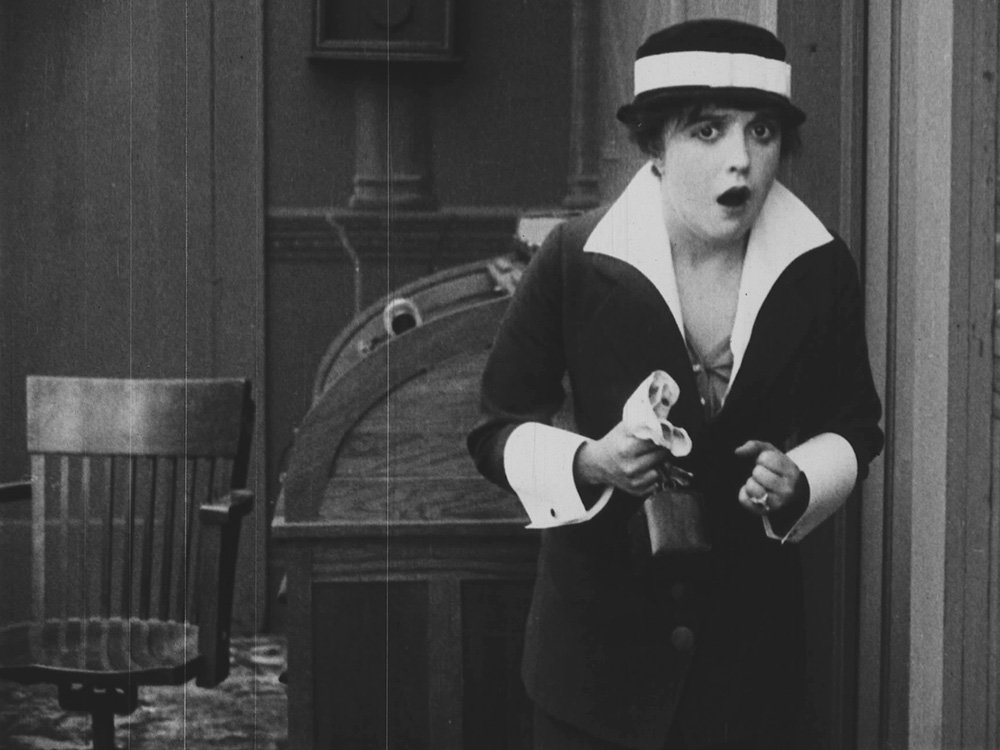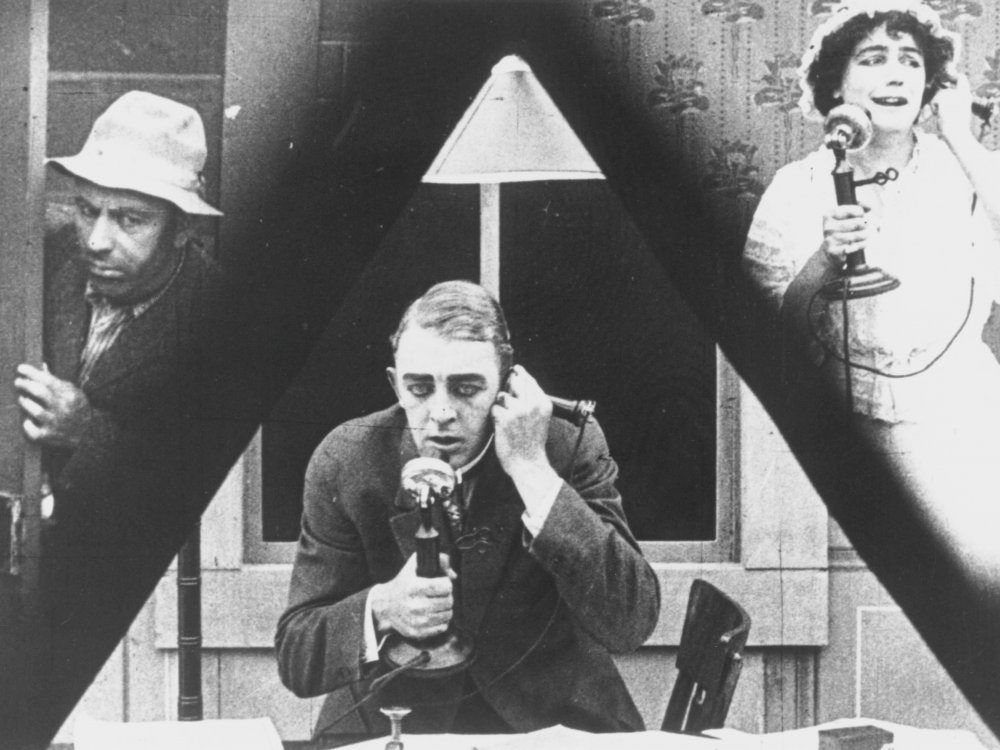
05 Eki WHERE TO BEGIN WITH EARLY WOMEN FILMMAKERS
by Pamela Hutchinson
Movies inspire a lot of passion, but the back catalogue of film history can be daunting. For every fan who’s obsessed with an actor, director or sub-genre, there’s another struggling to know where to start. Sometimes all it takes is the right recommendation to set you on your path from newbie to know-it-all…
Why this might not seem so easy
In the silent era, films were made mostly for women, and often by women. However, early female film directors are misrepresented by a ‘scarcity myth’. From the contemporary movie magazines to respectable film history books, early female directors are regularly referred to as rarities – even when that was not the case. A woman directed what was probably the world’s first scripted narrative fiction film; in the mid-to-late teens the Universal studio was bursting with female directors. Women such as Lois Weber, Alice Guy-Blaché, Germaine Dulac, Lotte Reiniger and Mabel Normand were leaders in their respective fields, and they were supported by an industry filled with female screenwriters, and some hugely important female producers producing movies for a majority female audience. But you wouldn’t know that from textbooks that relegate ‘women in film’ to a sidebar.
It follows that if the names of the early female filmmakers are unfamiliar to you, the films themselves are too, and you would be forgiven for thinking they aren’t worth seeking out. But that’s a big mistake – these are major talents, who often made films that were critical of contemporary gender relations, whether playful or political. And don’t overlook directors with just a few screen credits either. The setup of the film industry reflected the rest of society, and there are lots of reasons why talented directors found themselves quitting the business to work (or not) elsewhere – but not before showing us what they were capable of.
The best place to start – Suspense (1913)
Lois Weber was one of the greatest film directors of the early 20th century – a heavyweight rival to D.W. Griffith and Cecil B. DeMille. One viewing of this 10-minute action flick will give you a taste of her skills. Weber crafts a home-invasion thriller of nailbiting intensity that incorporates cross-cutting, three-way split-screens and a deftly shot car chase. Not only that, she is taking a tale frequently told by her male peers, that of a vulnerable woman in an isolated house threatened by an intruder and calling her husband on the telephone to come and rescue her – and making the radical decision to shoot it from a female perspective. Weber does this with some extreme POV shots, putting us right in the shoes of the woman trapped in the house with her baby, listening to the man with a knife climb the stairs. Not only that, but Weber herself plays the mother. Where other directors found pathos in the sight of women in peril, Weber supplies stone-cold fear – hence the stark and evocative name.
After this you’ll want to explore more work by Weber, it’s guaranteed. Like her contemporary Dorothy Davenport Reid, many of her films address social problems, and she made some powerful pictures with a purpose in the late 1910s such as Discontent (1916). But to get a sense of the span of her remarkable career, proceed directly to 1921’s The Blot.
Made in Weber’s own studio, shot in sequence and foregrounding her revelatory attention to detail (she was a meticulous stylist), this drama combines naturalism and a passion for social justice in a way that feels refreshingly modern. And without giving away any spoilers, it boasts one of the most emotionally sensitive endings in 1920s cinema – one you may be pondering for a while.

What to watch next
Weber was lucky enough to get her first job in film working for a woman: the great Alice Guy-Blaché. After pioneering fiction cinema at Gaumont in Paris from as early as 1896, Guy-Blaché crossed the Atlantic to work in the US. Falling Leaves (1912) is one of her most beautiful films, a delicate drama spun out of one haunting image: the sight of a young girl tying greenery on to bare branches because she has heard that her sister will die by the onset of winter.
When you start digging into more of Alice Guy-Blaché’s work from Making an American Citizen to Algie, the Miner (both 1912) and The Ocean Waif (1916), you’ll notice that she pays a lot of attention to gender constructions and often fraught or unequal relationships between men and women. So you’re probably ready for some more explicitly feminist silent cinema. Enter Germaine Dulac. La Cigarette (1919) and La Souriante Madame Beudet (1923) are two beautiful impressionist films about women who are unfulfilled in their marriages. And don’t miss out the work of Dorothy Arzner, another queer woman like Dulac, but this time working in Hollywood – the scene in Dance, Girl, Dance (1940) in which Maureen O’Hara chastises a leering audience is a famous rejection of the male gaze.
If Dulac gives you a taste for artistic or experimental cinema, time to relish Mary Ellen Bute’s ‘visual music’ film Parabola (1937) or the spectral double exposures in Marie-Louise Iribe’s fantasy Le Roi des Aulnes (1931).
Where not to start
You won’t be able to resist Mabel Normand’s charm and comic chops for long, but you may be glad that you saved her work until last. Normand became a star while working at the Keystone Studio in the 1910s, and it’s not hard to see why. She was a vivacious and sharp comedienne and utterly fearless when it came to stunt work – studio publicity called her the “sugar on the Keystone grapefruit”. She was also a director, and among her many achievements behind the camera, she shot the first film to feature Charlie Chaplin’s Tramp character: Mabel’s Strange Predicament (1914).
Normand’s films are uproarious, slapstick treasures. In fact, there’s little to distinguish her work from that of her male colleagues at Keystone and the other Hollywood studios where physical comedy reigned supreme. Watching her work both sides of the camera, especially in gems such as Mabel’s Blunder (1914), which features Normand in some eye-catching drag, you may begin to wonder why she never had the kind of illustrious career afforded to Chaplin, Keaton or Lloyd. The answer to that is complicated and partly to do with the fact that she died tragically young, aged just 37. Which is all the more reason to watch, enjoy and celebrate the films that she and her female peers made in these pioneering early days of cinema.
This article is taken from BFI website.


